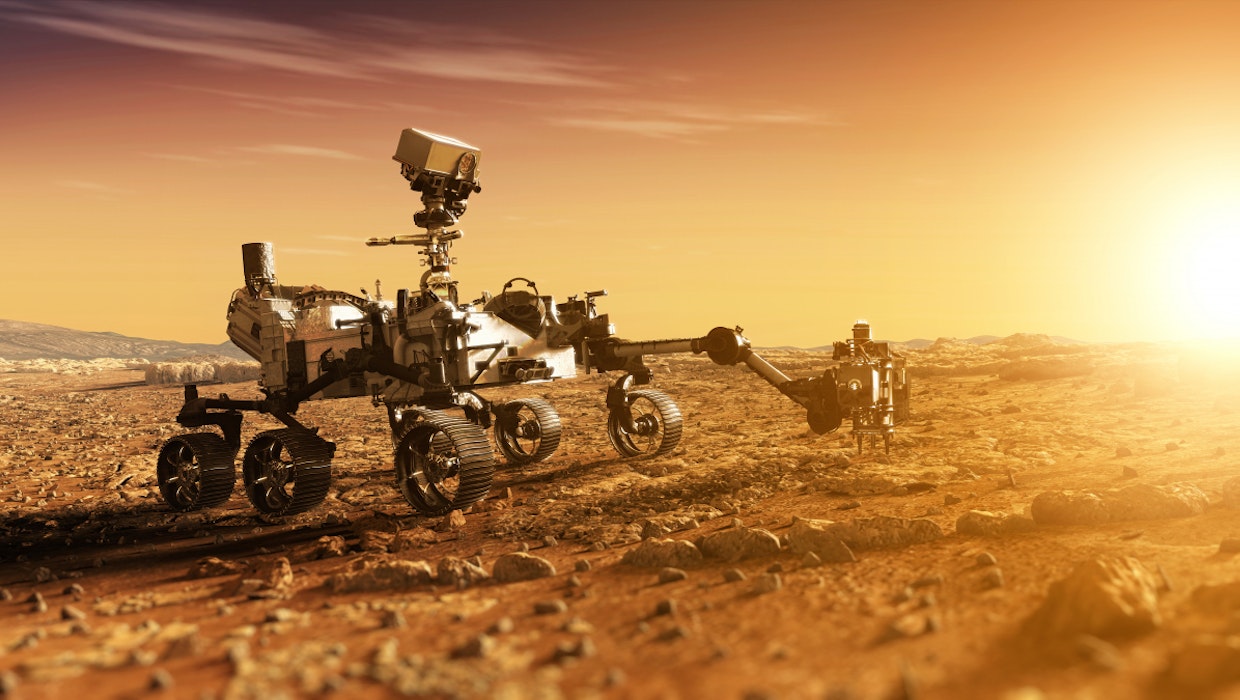
The Curiosity rover on Mars has found suspicious traces of methane that could indicate life. A study identifies one of the very close sources. (Photo: Evgeniyqw / Shutterstock)
Methane concentrations on Mars are a mystery to researchers. Gas rarely occurs there and is usually of organic origin. They have now identified the suspicious sources.
NASA’s Curiosity spacecraft may be close to mysterious sources of methane. Since landing in 2012, the craft’s instruments have detected six spontaneous concentrations of methane that NASA can’t explain. Then scientists at the California Institute of Technology modeled the methane gas molecules. They calculated the place of origin using wind direction and speed using triangulation and made a surprising discovery: one of the putative sources of emissions is very close to the Mars roving robot. This was reported by many media outlets, including Engadget.
Organic matter as evidence of extraterrestrial life?
The spectacle is amazing because there is actually no methane on Mars. The Curiosity laser spectrometer recorded an average of 0.41 particles per billion (ppb). That’s the equivalent of a pinch of salt in an Olympic swimming pool. However, the reported concentrations were 10 parts per billion, more than 24-fold. On Earth, gas is produced almost exclusively through biological processes – through life. Scientists rejoice that methane’s fingerprints can be clues to extraterrestrial life, for example in the form of microbes. Space.com Talking about “space burps”. Another equally auspicious guess is that it stems from geological activity associated with the presence of liquid water. This, in turn, will be an important building block for life. According to ESA’s Trace Gas Orbiter, the atmosphere on Mars does not contain methane, at least during the day. Curiosity takes its measurements at night.
The emission zone is located to the west of the Curiosity site, a few tens of kilometers away. “This may indicate that we chose a Curiosity landing site close to an active emission region,” the study authors write. There’s also another piece of information: researchers believe that methane was produced recently. So the cause of “space burps” may still be doing it – among other things near the Mars rover.
The study has been scientifically tested
Institute researchers published preliminary results of the study on June 3. Scientific evaluation is still pending, so that the results are not recognized as reliable. Either way, the mystery of the methane burps remains intriguing for some time — until the machine drops in and takes a closer look at the supposed sources.
You may also be interested in it

“Problem solver. Proud twitter specialist. Travel aficionado. Introvert. Coffee trailblazer. Professional zombie ninja. Extreme gamer.”




More Stories
With a surprise in the case: a strange cell phone from Nokia was introduced
PlayStation Stars: what it is, how it works and what it offers to its users | Sony | video games | tdex | revtli | the answers
t3n – Digital Pioneers | digital business magazine